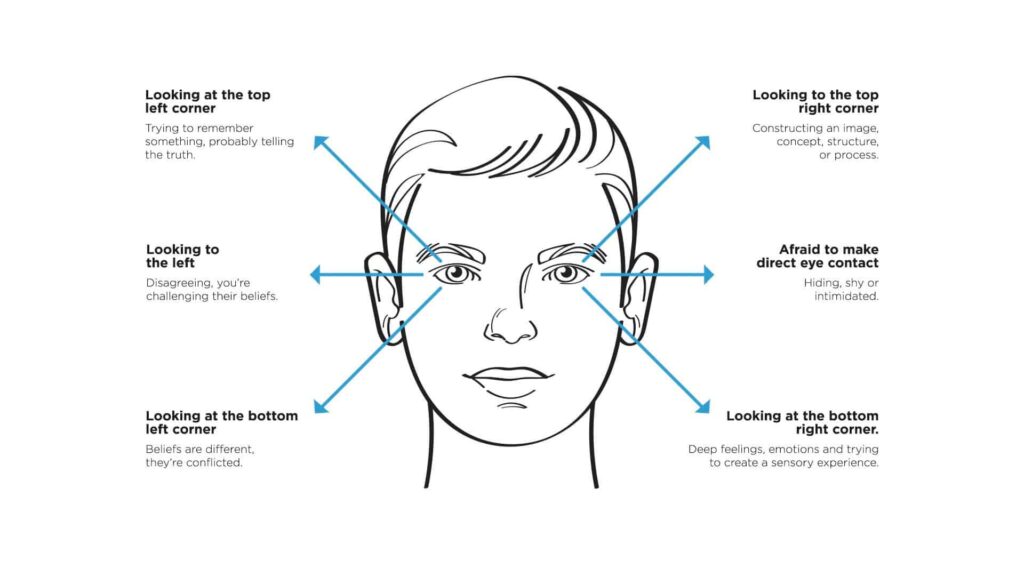Many people have hurt loved ones and lost business deals because they misunderstood or misread important cues. But what if you could strip away the masks that people wear and decode the real meaning in their words so these situations don’t happen?
If you could strip away the masks, wouldn’t business deals be so much easier to complete? You see, one of the most valuable skills that you can master in life and in business is the ability to read people. It will give you the winning edge in mastering negotiations, in business and in life.
I have the ability to read people because I meet so many people every single day. I’ve met thousands and thousands of people face-to-face.
Today I’m going to teach you some of the fundamentals on how to read people that will help you in business and in all areas of your life.
First, let’s define reading people. It’s by observing people, sometimes from a distance and knowing something about them, such as getting a feeling without them telling you. The way they talk, the way they walk, the way they stand.
It’s important to know these things because if you’re in sales, business, or negotiations, you want to have that upper edge when it comes to negotiating with or influencing them. This also applies to relationships with family. If you can read them, you have an advantage.
Watch this video about how to read people in business and in life.
Clue 1: Reading Their Eye Movement
Let’s begin with the body part that’s a natural truth and lie revealer. When you’re talking with people, look where their eye movement goes. Here’s a very simple example.
If someone is afraid to make direct eye contact with you, and they’re looking down, it’s like they are hiding. They don’t want to make eye contact. They may also be shy or intimidated.
If they’re looking at the top left corner, it means they are trying to remember something. For example, if you ask them, “Who is your best friend from high school?” and they look to their left, you know they are probably telling the truth.
If they’re looking to the top right corner, they are constructing an image. It doesn’t necessarily mean they are lying, it’s more like they’re visualizing something. For visual people, when you’re getting them to picture a concept, structure, or process, you might see them looking to the right.
If they are looking at the bottom left corner, it means they are having an internal dialogue. You could be disagreeing with the person. It could be their beliefs are different than what they’re hearing and they’re conflicted.
So if you give them a piece of advice and they’re looking to the left, chances are they are disagreeing. You’re challenging their beliefs.
If they are looking at the bottom right corner, they are digging into some deep feelings and emotions and trying to create a sensory experience. For example, they could be imagining the wind in their hair as they cruise the highway in their first convertible.
The eyes have an abundance of information about a person, but what if they are too far away for you to see their eyes? Their distance from you gives clues as well.

Clue 2: Reading People’s Distance
When you’re communicating with someone and they are far away, it means they aren’t listening and they aren’t interested in what you have to say.
If they’re getting closer and closer as you’re talking to them, it means they are responding positively to what you’re saying to them.
Most of our body language comes from non-verbal gestures such as how close or far you stand from someone. The gestures you are using and whether you wave your hands when you speak all show how expressive you are.
Physical touching also gives important cues. What does it mean if you’re sitting close to your friend and you touch her knee with your hand? What does it mean if you’re sitting close to someone, but that person is your client and you touch her knee?
Our ability to understand non-verbal cues can be the difference between disaster and deep connection. A touch can be offensive if done incorrectly, like a hand on the knee at a business meeting. A touch can be reassuring like a hand on the shoulder after hearing about tragic news. And this awareness doesn’t just apply to one-on-one situations.
More and more business meetings are happening on video screens. You can learn a lot from your observations. If your client is sitting back in his chair and looking at the floor during the meeting, he is sending you a message. You need to change what you’re talking about to get his attention back or lose the deal.
When it comes to communication, 55 percent of what we say is said through our body language. The rest of our communication is through the tone of our voice. Only 7 percent of our message is actually with the words we use.
In fact, if you’re confident in your understanding of body language, you can use it to strike up a wordless dialogue with your clients and build a connection with them.
Clue 3: Reading Someone By Mirroring Them
When you’re talking with someone and you can see they are trying to mirror your body language or copy you, then it means that person is trying to establish some kind of bond with you.
This is something you can do in negotiations. When you’re closing a deal in front of someone and that person sits back and crosses their legs, you can do the exact same thing as well.
It’s like doing a dance. At first, you may be mirroring them, and later you are leading them and they are mirroring you, without even being conscious of it. This is a way to build rapport, but be careful not to do it too obviously.
Clue 4: Reading Arm Movement
Body language will tell you a lot about the other person, but always remember the bigger picture. Let’s go back to the meeting room example. Sometimes, these places have the heat turned down, so people cross their arms to keep warm. In this case, they aren’t reacting to you.
But at other times, if someone has their arms crossed the entire time you’re talking, it means they’re trying to protect themselves. They’re shielding themselves from influence. If they’re more open to what you’re saying by leaning in or putting their hands on their chin, they’re listening to you.
Now, if a person is playing with their hands too much while talking, it actually means, “I like this.” Or when they are thinking, their fingers are tapping. Watch for these gestures. If you’re in the middle of a negotiation, the tapping could mean they are seriously considering your offer.
Clue 5: Reading Leg and Knee Positions
Legs and knees can give you as much information as arms and hands. If someone is nervous, or ADD, or scatterbrained, they’ll bouncing their knee or their leg. Shaking a leg under the table means they are nervous and you have the upper hand.
If you are talking to someone and you can see that they are pointing their knees towards you, they’re interested in what you are saying. That’s great bonding. But if their knees are pointing away from you, that means they want to get out of there. So if their knees and feet are pointing to the exit, it’s time to stop talking.
A person’s body language is like the close-captioning feature on your screen, adding more information to what you’re already hearing. Pay as much attention to a person’s body language as their words if you want to get the entire message.
If you want to bond with someone, do a quick test. If you touch them and they pull back a bit quickly, release, don’t touch. It means it’s no good.
Those are some of the fundamental skills on how to read people. Practice these techniques on your colleagues, friends, business partners, your spouse… and see if they work for you.
Are there other clues you want to know? Comment below.



